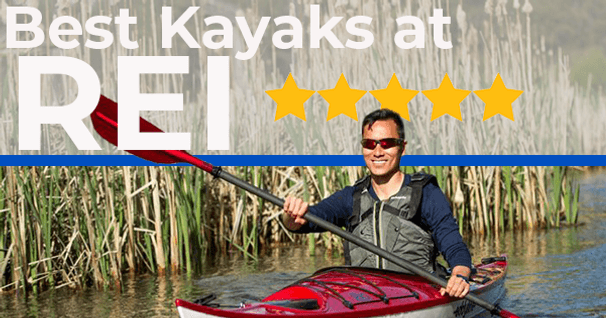How to Feel Confident Sea Kayaking
If you worry about capsizing when sea kayaking, you may be thinking of your kayak as just another boat. In this video from Paulo (Dancing With the Sea), you will learn a very easy position that makes capsizing almost irrelevant, at least in most conditions.
The Balance Brace
You may fear capsizing when paddling in waves. Or maybe you don’t edge much when making a turn. Maybe you’re not as graceful as you would like to be because of it. When we fear capsizing we just don’t have the same peace of mind or elegance. It’s for those of us who want more ease and finesse, and less feeling like “it’s hard and I don’t feel safe”. The kayak is not a tool to help you conquer, it’s to show us that we belong to nature. If you secretly wish you could do the balance brace, but think “I’m not flexible enough” or “I’m too old to learn new tricks” or “it’s too hard it would take years to learn”, you’ll be happy to hear about what the research department of Dancing With The Sea has been up to.
Here’s why you may want to learn the balance brace:
It’s the position you want to get into automatically as soon as you know you’re going in the water.
It’s a lot more relaxing than being underwater setting up for a roll.
If you don’t learn this before rolling, you may find you need to use force and coordination, and your roll probably won’t be very reliable.
A lot of people think that this is an advanced technique that requires a lot of talent. But actually if you have a good fit with your kayak and some flexibility, for most people it’s quite easy.
The position is simple:
Lay on the water, on your back, and tilt the kayak upright so it doesn’t push you underwater.
To be able to rotate enough, you need to let your upper thigh move back, and your lower thigh move forward.
Your lower leg will bend and put pressure on the thigh brace.
You will use that pressure on the thigh brace to tilt the kayak upright.
The other leg can be relaxed, or it can help by putting pressure on the bottom of the kayak.
Just play with it and see what works for you.If you can’t get your back flat on the water, it’s probably because you are not rotating enough inside your kayak. Try loosening your foot pegs and see if that helps you get more rotation
If you don’t get your back flat on the water, you won’t have enough flexibility to tilt the kayak upright enough, and it will push you underwater. Think of taking up space on the water with your back. If you don’t have a good fit with your kayak, you will find out right away. You may feel like you will fall out if you rotate that much. If so, you may require more support from your thigh braces. And as you slide up on the back deck focus on arching more and putting more pressure on the thigh brace.You may find that it makes it smoother.Practice this motion until it’s nice and easy.
What you don’t want to do is sit up as you slide your back over the rear deck. This will pull you back in the water. Even if your kayak has a high rear deck, you can still arch your back as much as it will allow you. This will keep your head as low as possible for as long as possible. It can still feel easy.
You also want to make sure you don’t un-rotate as you come up. Notice that I have more of my body weight out of the water. And it’s preventing me from tilting the kayak upright. When you stay rotated you have more flexibility, and you can keep your body weight in the water for longer. As you become comfortable in the balance brace position you will find yourself automatically taking that position anytime you hit the water.
This is the most stable position when you are out of the water. This is the most stable position when you’re in the water. With some mindful practice it will become very easy to lay on the water, and come back up again. You may even be able to relax and stretch yourself when you’re on a longer paddle. You will feel a lot more confident in rough water knowing that even if you did go over it’s still no big deal.
If you liked this video and you want to learn more techniques that give you ease and finesse with your kayak, then go to DancingWithTheSea.com.
Related Articles
by Eric Jackson We’ve learned the flatwater strokes, forward stroke, and the backstroke. We have two…
If you capsize and have to swim back to shore, swimming with your paddle will be a lot easier and…
How often do we go all out on our first day back on a wave, or playing in current, or in a rolling…
Before hopping in the car to head to your local REI dealer, you might ask yourself a few questions…



